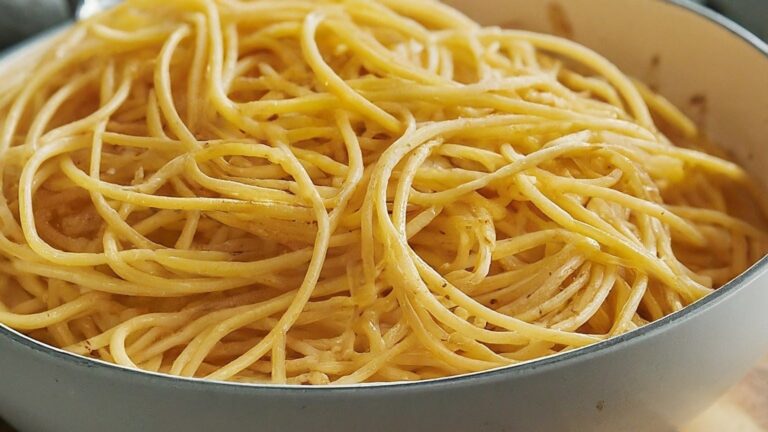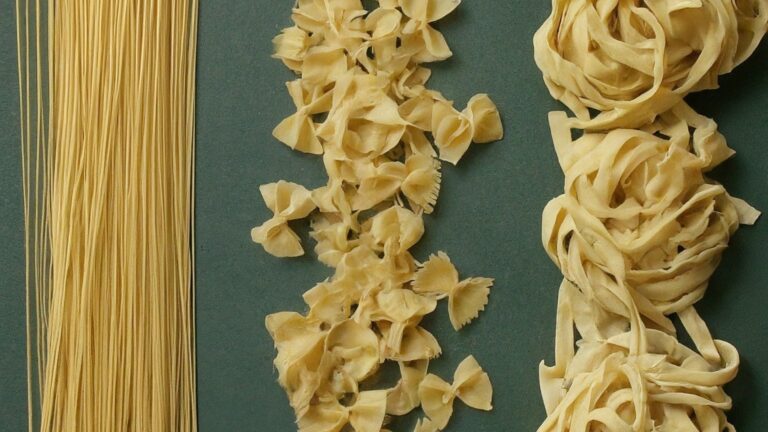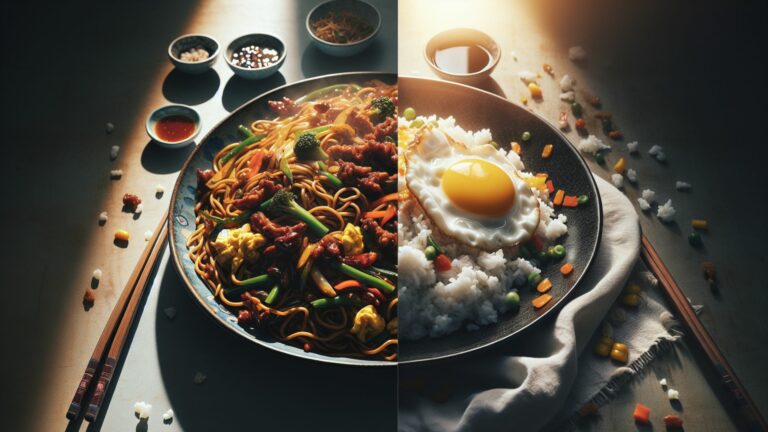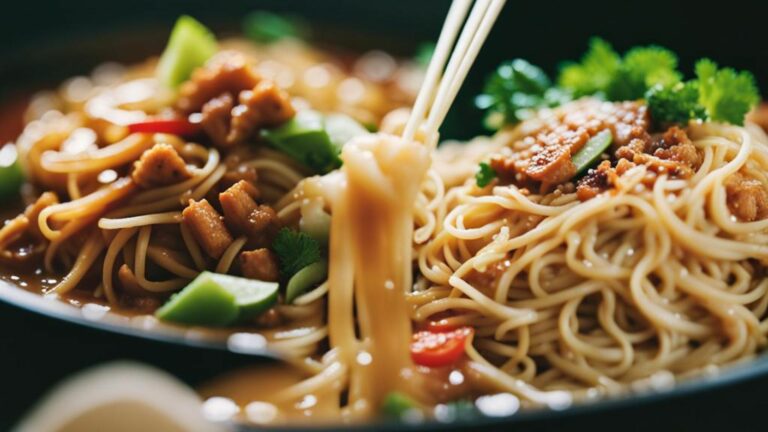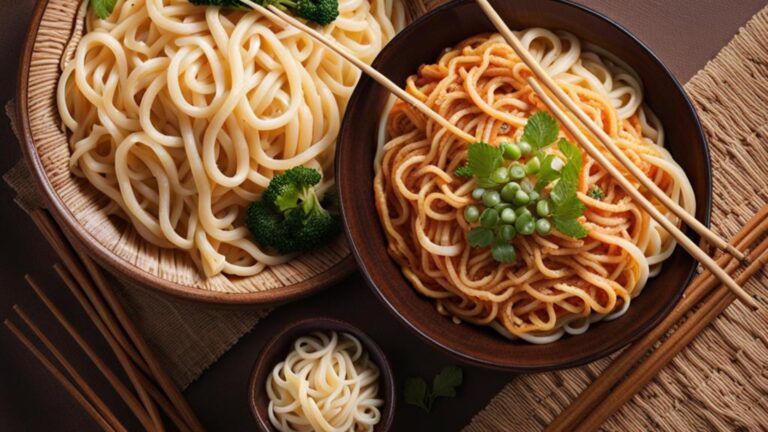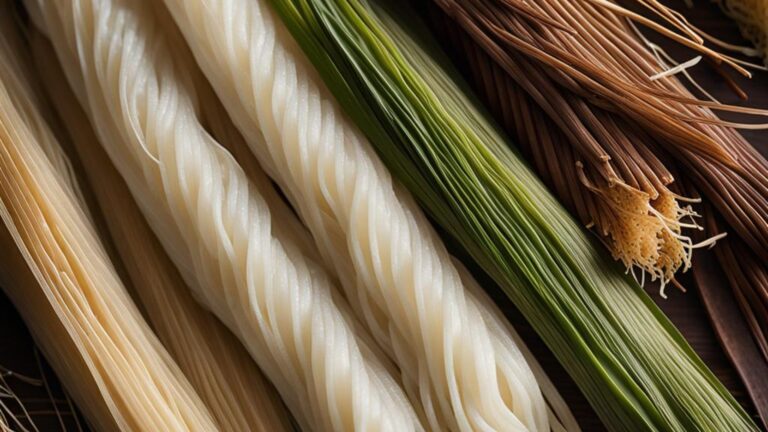
Soba and spaghetti are two popular noodle variations. They are so popular around the world.
But many people can’t differentiate one from another. Many people don’t know the basic differences between soba noodles and spaghetti.
The main differences between soba noodles and spaghetti are: Soba noodles are made with buckwheat flour, have a nuttier flavor, and are thinner than spaghetti. Spaghetti is made with wheat flour and has a smoother texture.
Some more differences are there between them. In the later parts of the article, we discuss them. So, without any delay, let’s explore these differences in detail.
An Overview
A table is a trendy way to express data organizationally. Considering the advantages of a table, we arrange a table of comparison between Soba Noodles and spaghetti. You will get a short description here.
| Criteria | Soba Noodles | Spaghetti |
| Origin | Japan | Italy |
| Main Ingredients | Buckwheat flour, wheat flour, water | Durum wheat semolina, water |
| Texture | Chewy, slightly nutty | Firm, smooth |
| Flavor | Earthy, nutty | Mild, neutral |
| Cooking Method | Boiled in water | Boiled in water |
| Serving Temperature | Hot or cold | Hot |
| Sauce Pairings | Soy sauce, dashi, miso, sesame oil | Tomato sauce, pesto, Alfredo sauce, olive oil |
| Nutritional Value | Lower in calories, higher in protein | Higher in calories, lower in protein |
| Gluten-Free Option | Available | Not available |
| Popular Dishes | Soba noodles salad, soba noodle soup | Spaghetti Bolognese, spaghetti carbonara |
| Cultural Significance | Traditional Japanese dish | Iconic Italian dish |
You should remember that there are many types of soba noodles and spaghetti. So, some info can vary depending on the types of them.
Also, the nutritional value and flavor can vary depending on the specific brand and recipe.
However, here in this table, we provide a general overview of the differences between the two types of noodles.
Soba Noodles vs Spaghetti: Differences
Indeed, here are more detailed differences between soba noodles and spaghetti. You must go through them to clear your conception. So, you must read them.
Differences in Ingredients
The main ingredients of Soba noodles are buckwheat flour. This ingredient gives Soba noodles a unique nutty flavor and slightly firmer texture than spaghetti. Soba noodles may also contain wheat flour.
Spaghetti, on the other hand, is made from durum wheat flour and water. For this flour, it gets a mild taste and a smooth, slightly chewy texture.
Nutritional Content
Soba noodles are high in protein and fiber and low in calories and carbohydrates. Also, Buckwheat flour, the primary ingredient in soba noodles, is a good source of protein and fiber. These elements will help to promote feelings of fullness and satiety.?
On the other hand, Spaghetti is higher in carbohydrates and lower in fiber and protein. These elements will make it less filling and may cause blood sugar levels to spike. So, we can say that Soba is healthier than spaghetti.
Appearance of Soba Noodles and Spaghetti
In appearance, both noodles have some similarities. But still, you will find some differences. Soba noodles are thin and long.
Spaghetti is also the same. But a difference is there in color. Soba is typically slightly darker in color and has a slightly rougher texture.
On the other hand, Spaghetti is usually thicker and longer than soba noodles. Its texture is smooth and shiny.
Preparation Process Differences
Though everyone has his style of preparing noodles, the soba and spaghetti-making process differs. After boiling in salted water, Soba noodles must be kept for a few minutes until they are al dente.
When cooked, they are rinsed in cold water to remove excess starch and cool them down. Spaghetti is boiled in salted water until it is al dente but not rinsed in cold water after cooking.
Instead, it is usually served immediately with a sauce or other ingredients.
Culinary Uses
Soba noodles are commonly used in Japanese cuisine, so their uses only surround Japanese culture. Soba noodles are often served cold with dipping sauces or in hot soups.
Some people use it in stir-fried dishes or as a side dish with grilled meats and vegetables. In contrast, spaghetti is a staple in Italian cuisine. It is typically served with tomato-based sauces, meatballs, or other ingredients.
Similarities Between Soba Noodles and Spaghetti
While they come from different cultures and have distinct flavors and textures, they have some similarities, as you already know from the above discussion.
Here are a few similarities between Soba noodles and Spaghetti:
- Soba noodles are made from wheat flour, although the type of wheat used may differ, and so are spaghetti noodles. Soba noodles are made from buckwheat and wheat flour, while spaghetti is made from durum wheat semolina. So, this is a similarity between both noodles.
- Both soba noodles and spaghetti are long, thin noodles. They also can be served in various ways. That can be served hot or cold. They are versatile and can be paired with different sauces, vegetables, meats, and seafood. This similarity is very vital here.
- The cooking process of both Soba noodles and spaghetti is the same. Both noodles can be cooked in boiling water until al dente. Then, the cooking steps vary based on the recipe.
- Both noodle types are popular choices for stir-fries and noodle salads. So, this is a similarity here to remember.

FAQs
Here are some questions that many people ask about these two noodles. You may also review these questions for more information about these two noodles.
Which Type of Noodles is Healthier, Soba Noodles or Spaghetti?
Soba noodles are healthier than spaghetti because Soba has a higher protein content and lower calorie count. With that, soba noodles are often made with buckwheat flour, which is gluten-free.
How Do the Cooking Methods for Soba Noodles and Spaghetti Differ?
The cooking methods for soba noodles and spaghetti are pretty similar. Both are typically boiled in water until they are al dente. But the later process is so dissimilar. Soba noodles may require a shorter cooking time than spaghetti because of their thin body.
What Are Some Traditional Sauces and Toppings Commonly Used With Soba Noodles and Spaghetti?
Soy sauce, dashi, miso, and sesame oil are famous sauces for soba noodles. At the same time, spaghetti is commonly paired with tomato sauce, pesto, Alfredo sauce, and olive oil.
Can You Substitute Soba Noodles for Spaghetti in a Recipe, or Vice Versa?
It depends on your choice. You can use one as a replacement for another, but you have to keep these differences in mind because soba noodles and spaghetti have distinct flavors and textures.
Conclusion
These differences between soba noodles and spaghetti are very keen. You will not get these differences if you have no deep knowledge. But these minor differences must be considered if you want to be a taste expert.
That was all for today; I hope you will be able to utilize this knowledge in your kitchen. Some more discussions on our site show the differences between noodles. You may read them, too.

